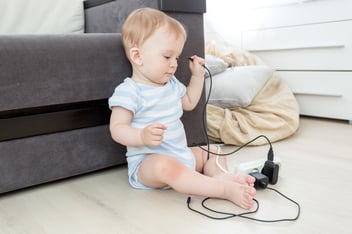Carbon monoxide (CO) is sometimes referred to as “the silent killer” because it's not only poisonous, it’s also colourless, tasteless, and odourless. Unless you have a working CO alarm installed, it’s incredibly hard to detect. So how can you tell if you’ve been exposed to this dangerous gas?
Early symptoms
Early symptoms look a lot like the flu. This isn’t very helpful in the middle of flu season, and especially while BC is affected by COVID-19. But if you’re experiencing the following symptoms, you may have been exposed to carbon monoxide:
- Headaches
- Confusion
- Vomiting
- Weakness
- Dizziness
- Chest pains
One helpful way to tell the difference between monoxide poisoning and the flu is that while the flu is often accompanied by a fever, this is never the case with carbon monoxide.
Further Symptoms
As carbon monoxide builds up in the bloodstream, symptoms evolve and magnify:
- Increased confusion and drowsiness
- Fast breathing, fast heartbeat, or increased chest pain
- Vision problems
- Seizures
Too much exposure to CO will lead to death.
Extreme weather and CO
During extreme weather events, it's important to be extra diligent about the symptoms of CO. Our research on the climate change impact on technical equipment indicates that extreme heat and extreme cold can exacerbate the risk of CO. For example, adding a window-vented air conditioner, or extended use of malfunctioning fuel-based appliances, may increase likelihood of carbon monoxide exposure.
What to do if you suspect CO poisoning
If you think you could be suffering from CO poisoning, follow this step-by-step process:
- Turn your appliances off
- Get everyone outside of the building, including pets
- Call 911 or your local emergency number
- Seek medical attention to treat symptoms
If you can’t leave your home, position yourself near an open window or open door and complete the other steps.
If you are able to leave your home, do not go back inside until you’re sure it’s safe. The fire department or your natural gas provider will be able to tell you when you can re-enter.

How to prevent CO poisoning
The only way to tell if there is carbon monoxide in your home is with a working carbon monoxide alarm.
Make sure to purchase a CO alarm that comes with a certification mark from a certification body accredited by the Standards Council of Canada. Before installing your CO alarm, read through the manual and familiarize yourself with the various sounds it makes and their meaning. After installation, keep in mind the alarm’s expiry date—CO alarms typically expire after five to ten years.
In addition to having a CO alarm, you should make sure your gas appliances are installed and serviced by a licensed gas contractor. Book inspections annually, to make sure they’re in good working order and not at risk of producing CO.
More on carbon monoxide
CO Safety Tips has more information on CO and how to protect yourself. If you have pets, you should also check out our article “8 signs your pet may be suffering from carbon monoxide poisoning.”




